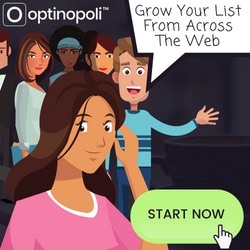They were in a specific niche selling products and services B2B within a specific geographical location. Their client base, which they had an intimate knowledge of (of course, vitally important), certainly didn’t use either social platform either personally or professionally. It wouldn’t even be on their radar.
Unusual? With over one and a half billion monthly active users worldwide on Facebook alone, yes. But general stats are just that – general. It’s always smart to know your own market in fine-tuned, specific detail.
Instead, the best way for them to reach potential customers was through search (Google) and video (YouTube), backed up by a presence on LinkedIn because they were B2B.
Smart. They know their market. And as they saw it, Facebook and Twitter were completely irrelevant.
But, smart as they are, is that really the case?
Would Facebook and Twitter actually still hold value for them as a business?
In fact, this post shows that even if you’re not reaching your marketplace directly through Facebook and/or Twitter, there are still important benefits to be had.
Rather than ignoring these platforms (even if your customers do!), your business should still strive to build up a following and a presence on them. While you might not use them to reach clients directly, they can certainly help indirectly.
Here’s 3 main reasons why…
 Boosting Visibility Of Your Videos…
Boosting Visibility Of Your Videos…
YouTube is the world’s second largest search engine, just behind Google, the parent company. It’s also the third most visited site, and then you have all the video visibility on Google itself through its web and video search options.
So it pays to ensure your own videos get as much visibility as possible, and build their rankings on both YouTube and Google.
The number of people viewing your video “is one of the most important YouTube ranking factors” (Search Engine Watch). It’s reasonable to think the same applies for the ranking of your video on Google.
By building up your followers on Facebook and Twitter (even if they’re not prospective customers), and sharing your videos with them, you can:
- Boost video view counts; and
- Attract subscribers to your YouTube Channel, helping further with (1) above over the longer term.
Both mean you’re helping your videos rank more highly… and thereby reach more of your actual marketplace.
(See related resource: 5 Key Ways to Increase Your Twitter Followers (Without Buying Them!))
But note it’s not the only factor for ranking videos. Engagement levels also count – your video needs to be worth watching! And worth sharing…
Hold on… sharing.
Sharing levels also help indicate the quality and authority of your video, and play a part in how its ranked. Sharing it yourself helps, even more so when it’s then reshared by your followers with their own communities. Facebook and Twitter have a central role to play in this.
The more it’s shared, and the more click-throughs to your video you gain, the more other engagement metrics go up to, such as comments, likes, and embeds on other sites.
And the more you reach your intended audience.
Beginning to see how this works?
 …The Same Applies To SlideShares
…The Same Applies To SlideShares
Presentations on SlideShare are generally well ranked on Google. Your marketplace might not be heading straight to SlideShare when they go online… but they’ll still find your presentations via searches on Google, and end up on the platform after clicking through.
SlideShares can gain search engine visibility far more easily than content on your own site might.
This is one way in which SlideShare works so well as part of your content strategy and boosting your online visibility.
So how would Twitter and Facebook help your SlideShare presentations get found by your marketplace, on Google?
As with videos, it’s reasonable to assume that Google are looking at engagement metrics on SlideShare as part of their ranking algorithm to help determine how it should rank alongside other content.
Engagement data they have ready access to includes:
- Views
- Embeds
- Shares
- Downloads
- Comments
- Likes
- Followers
…and of course, inbound links.
Sharing your presentations on Twitter and Facebook help all these metrics grow. By doing so, it’s likely you’re helping your presentations rank and get seen by your marketplace on Google.
It can also help build your visibility on SlideShare itself via the Popular tab that they have within categories. This can increase your views and other engagement metrics further, with more potential benefits for Google’s rankings of your presentation.

Sharing on Facebook and Twitter can help your SlideShare gain more visibility via the Popular tab, further increasing engagement metrics.
 Improve Your Website’s Ranking (Or Does It?)
Improve Your Website’s Ranking (Or Does It?)
The relationship between social media activity and your rankings appears to be fairly indirect. In fact, Google have said that social signals do not have an impact on organic rankings, at least not directly.
In other words, getting social mentions doesn’t directly impact your own rankings.
So, would activity on Facebook and/or Twitter linking to your content help your rankings and visibility on search at all?
Yes, and here’s how.
Firstly, content on Twitter can be shown directly within the search results, as any other content might be… Admittedly, such rankings might be fairly thin on the ground given the amount of other content available.
But secondly, and much more importantly, by using these social media platforms, you’re building your authority, credibility and traffic… and getting your content seen by more people.
This can lead to more people linking to your content, for example from their own blog or elsewhere, and in turn helping your own content rank more highly alongside your overall online visibility.
See the value?
![]()
In Conclusion
For most businesses, you’re going to have customers and prospects on both Facebook and Twitter. If so, this post should further reinforce the need for your business to be active on these platforms, regularly updating them with new content and building up your following.
But if you’re one of the exceptions and you can honestly say you don’t have customers on Twitter and/or Facebook (there are certainly are some businesses like this, you’re not alone!), hopefully you can now see that it pays to be building up your network and building your presence on these platforms anyway.





This is a great post! I really wouldn’t see why any business couldn’t get exposure from Facebook. Especially when you can run ads directly to zip codes.
Any local business could run an ad on Facebook, and do well with it (at least I think so).
Thanks for sharing the great value. God Bless!
Hi Justin! It is unusual, but for some businesses the community they sell into aren’t particular web-savvy or online much at all. They might use search when they need to (and probably reluctantly!), but won’t be on Facebook, it has little relevance to them so even targeted FB ads wouldn’t reach them (again, content wins out). Thanks for sharing your thoughts!